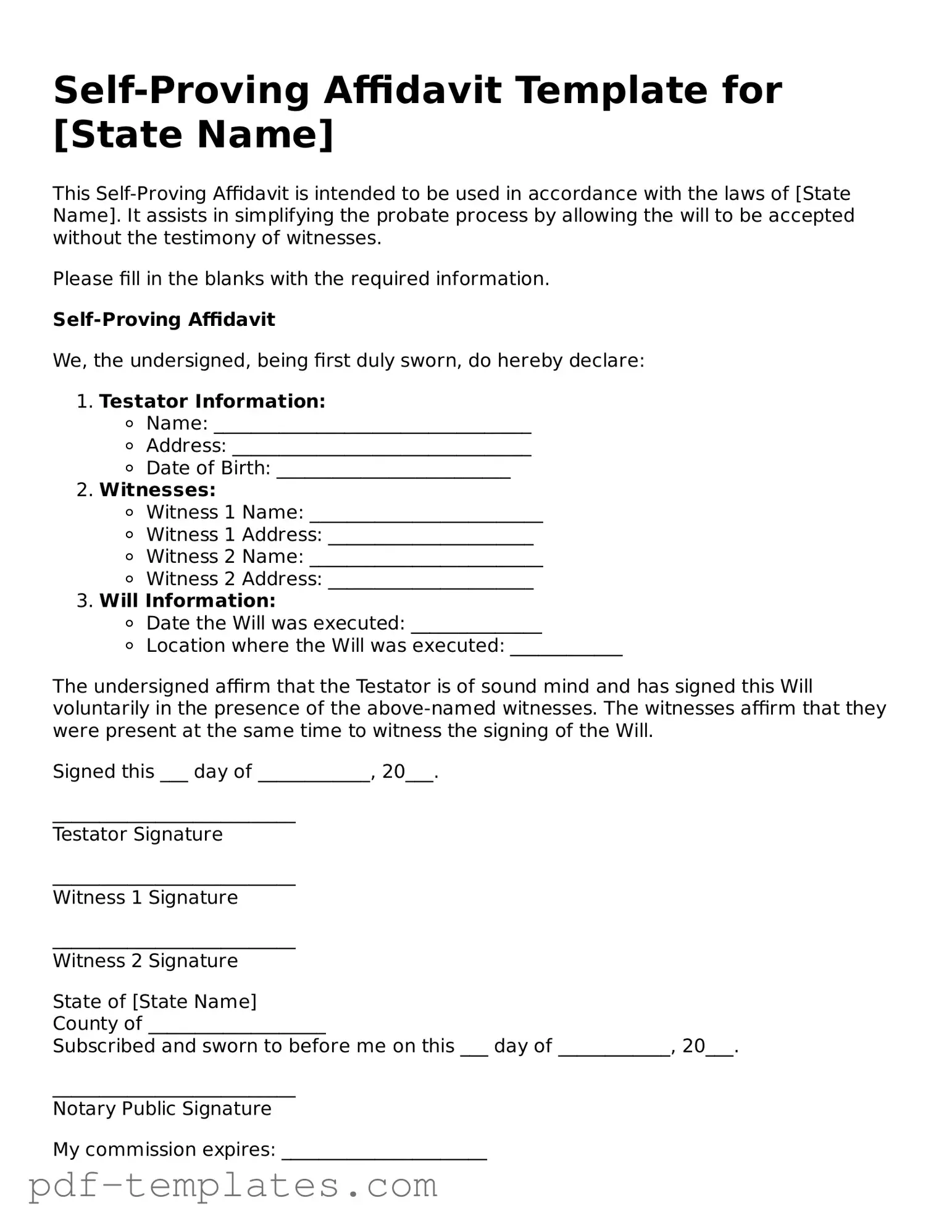The Self-Proving Affidavit is an important legal document that plays a significant role in the estate planning process. This form serves as a means to simplify the probate procedure by allowing a will to be accepted as valid without the need for witnesses to testify about its authenticity. Typically, the Self-Proving Affidavit is signed by the testator—the person who created the will—and witnesses at the same time the will is executed. By doing so, it provides a sworn statement affirming that the will was created in accordance with the law and that the testator was of sound mind and free from undue influence. This affidavit not only streamlines the probate process but also helps to reduce potential disputes among heirs, as it serves as a reliable proof of the will's legitimacy. Furthermore, the Self-Proving Affidavit can be particularly beneficial in jurisdictions where the probate process can be lengthy and complex, offering a more efficient path to settling an estate. Understanding the nuances of this form is crucial for anyone involved in the estate planning process, as it can have lasting implications for how a person's final wishes are honored and executed.
